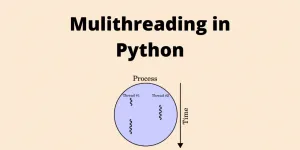Stark: "Uh, say J.A.R.V.I.S., is it that time?"
Jarvis: "The House Party Protocol, sir?"
Stark: "Correct."
Since I saw Iron Man, I have been intrigued by creating an assistant similar to Jarvis that focuses on helping me accomplish pre-defined goals.
With Jarvis v1, I created a GroupMe command-based bot that parsed incoming messages and responded when keywords were identified within a message. The implementation was a lengthy IF statement that proved hard to manage. Each interaction with the bot required commands to be parseable within the message content with no overlapping keywords. While this worked fine as a pure text-based chatbot, the interaction scope was limited and confined to the group chat.
With Jarvis v2, my group migrated over from GroupMe messenger to Discord. Thus, the bot was ported over to support Discord, and new commands were added, such as fetching videos from YouTube.
As I think about v3, my focus is on a more personal assistant versus a chatbot. The ideal v3 will be an Artificially Intelligent (AI)/Machine Learning (ML) enabled assistant accessible on all devices, with my mobile phone serving as the primary data collection device. The assistant should explore my behavioral data and suggest changes that allow me to achieve pre-defined goals.
Modern mobile phones are well equipped to track and monitor a person with GPS and all the sensors, so I would like to leverage the hardware and software APIs to collect and pass data to my AI assistant. Through machine learning and data science, the AI should identify behavioral patterns and determine if tracked actions deviate from my desired goals. Over time the AI should provide suggestive feedback, such as recommending I spend less time sitting down, staring at a digital display, or not exercising.
When replacing bad habits with healthier ones, the AI should take independent actions (within an acceptable range) to correct anti-goal behaviors identified by ML pattern recognition. For example, suppose the AI analyzes the input data and determines I am not getting enough sleep per day/week. In that case, a "sleep-by" and "wake-up" alarm should be set and adjusted based on the actual times I fall asleep (think Fitbit or Apple/Samsung watches). Sleep quality should also be tracked and correlated to self-reports of energy levels and daily nutrition (macro/micro) tracking.
When "focus mode" is enabled, similar to laptop power save settings or do not disturb modes in mobile devices, the AI should take automatic actions to keep me focused on a particular task. For example, suppose I received a text message while in "focus mode," it should respond to the sender, notifying them that I am working on something and will reply as soon as possible. It should also be able to escalate/interrupt "focus mode" when specific contacts reach out.
Every morning, the AI should also nudge me toward achieving my pre-defined goals by curating playlists of media content (behavioral motivation) or scraping a list of scholarly sources to find goal-related articles for me to read.
Eventually, Jarvis v3.0 will be expanded to smart-home operations and online order fulfillment.
In a future post, I will discuss the approach, architecture, and implementation of Jarvis v3.
Please subscribe to be notified or bookmark the blog and check back regularly for updates.



